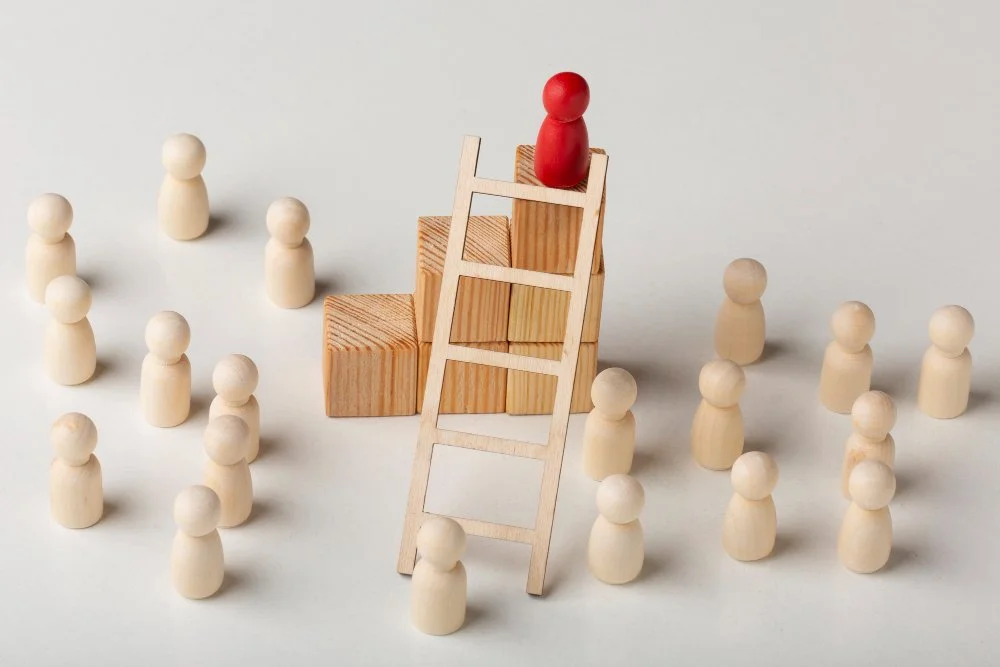A Team Work Mindset: How Leadership Development Reduces Turnover
Are you hoping to reduce staff turnover and boost team performance? Without a a team work mindset, these challenges will keep undermining your organisation’s success. Employees who feel valued, supported, and part of a collaborative culture are far more likely to stay and perform at their best — but this can only happen when leadership actively encourages teamwork at every level.
Each part plays a unique role in collective success—just like every team member in building effective collaboration.
Why Teamwork Matters: The Key to Productivity and Retention
Collaboration isn’t just a trendy phrase — it’s a vital part of every successful business. Organisations that develop a teamwork mindset often see higher productivity, fewer conflicts, and greater innovation. When people work well together, they’re more engaged, more aligned with company goals, and more motivated to succeed as a team.
“Alone we can do so little; together we can do so much.”
— Helen Keller
The power of a teamwork mindset begins with leadership. Leaders who model collaboration inspire their teams to communicate openly, support one another, and work towards shared goals. This kind of environment reduces workplace tension and allows everyone to focus on solving problems rather than creating them.
Leadership's Role in Promoting a Team Work
Collaboration Starts at the Top
If your leaders aren’t demonstrating a teamwork mindset, your business is missing its greatest opportunity for growth. Leaders set the tone for company culture — and when they don’t lead collaboratively, it’s unrealistic to expect their teams to do so.
Without strong leadership, poor communication, disengagement, and conflict can quickly become normal. A teamwork culture doesn’t appear overnight; it must be created and nurtured by leaders who lead by example.
Leadership shapes a work team’s success—without leaders championing collaboration, teams will struggle to reach their full potential.
Innovation Through Teamwork: A Real-Life Example
A London-based start-up recently wanted to strengthen their creative problem-solving and push their teams to think differently. We partnered with them to design an immersive full-day workshop called Marvellous Ideas.
Teams were challenged to create and pitch a pilot episode for a new Marvel series using unused characters. They had to invent a unique hero and villain, include an unexpected twist, and finish with a strong ending.
The results were remarkable — imaginative, confident, and full of unexpected creativity.
“I never thought I’d pitch a superhero show — this really changed how I think about idea generation.”
“Loved the mix of structure and freedom — innovating felt easy.”
This workshop proved how powerful teamwork can be. When teams collaborate effectively, they unlock creativity, solve problems faster, and achieve outstanding results.
Leadership Training: The Key to Transformation
Leaders play a crucial role in shaping how teams think and work together. When they adopt a teamwork mindset, they build cultures that encourage collaboration, open communication, and shared success.
But this kind of transformation doesn’t happen by accident — it requires intentional leadership training. Investing in leadership development that focuses on collaboration helps teams reduce conflict, improve trust, and perform more effectively.
Organisations that make this investment often see stronger engagement, lower turnover, and a more unified workforce.
If you’re ready to transform your workplace, Sidestream can help. Our immersive experiential learning programmes give leaders the practical tools and confidence to build truly collaborative teams.
-
Behavioural training develops the emotional intelligence and interpersonal skills that make teamwork thrive. It helps individuals manage emotions, communicate clearly, and resolve conflicts constructively.
At Sidestream, we provide tailored behavioural training that helps teams build resilience, improve collaboration, and create a more positive, productive working environment.
-
What is the difference between cognitive and behavioural training?
Cognitive training helps people improve the way they think — for example, boosting memory, focus, and problem-solving skills. It’s all about sharpening the mind so individuals can process information more clearly and make better decisions.
Behavioural training, on the other hand, focuses on how people act in real-life situations. It teaches practical skills such as better communication, managing emotions, and handling conflicts calmly.
In simple terms:
Cognitive training strengthens how you think.
Behavioural training improves how you respond and interact with others.
Together, they help people grow mentally and emotionally — both at work and in everyday life.
-
Experiential learning means learning by doing. You take part in real activities, reflect on what you’ve done, and then use that experience to improve next time. It’s a hands-on way to understand things deeply — because you’re not just reading about them, you’re actually living them.
Immersive learning takes that idea a step further. It uses technology, such as virtual or augmented reality, to place you in lifelike situations. Imagine practising teamwork, problem-solving, or negotiation inside a realistic virtual world — where you can make mistakes safely and learn without any real risk.
In short:
Experiential learning = learning from real experiences.
Immersive learning = learning through realistic simulations powered by technology.
Both methods help you gain confidence and apply your knowledge effectively in real life.

